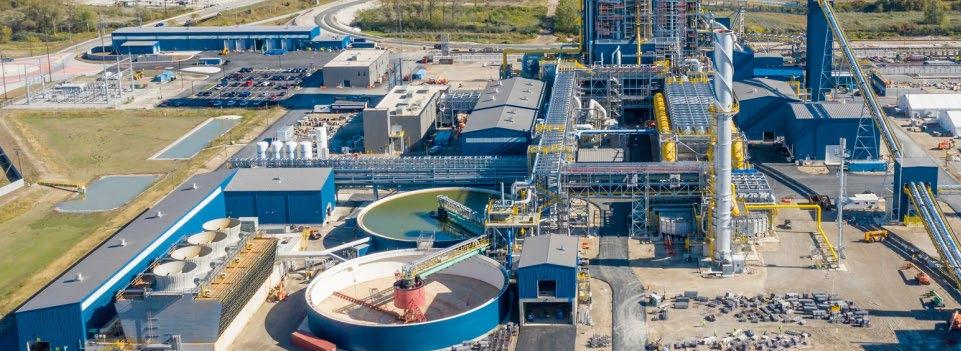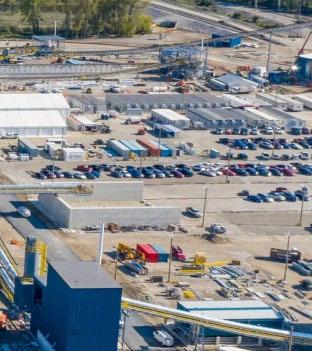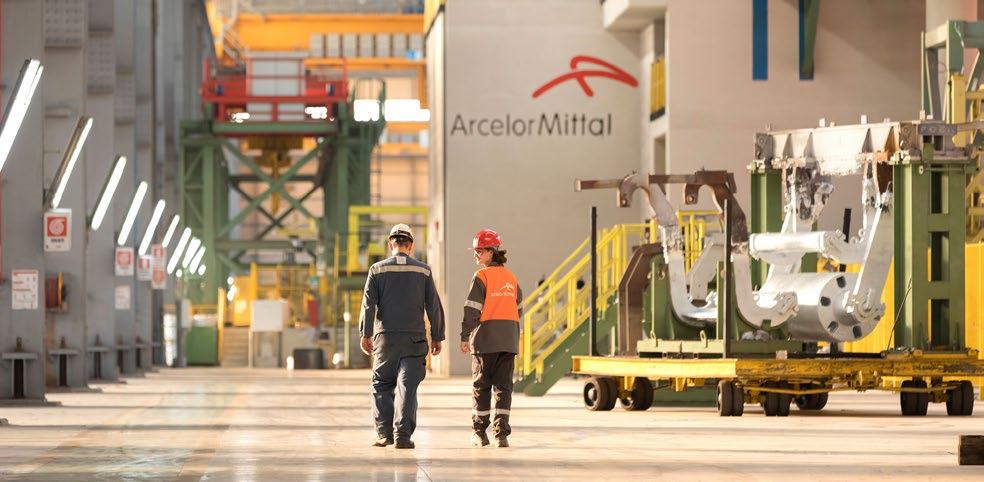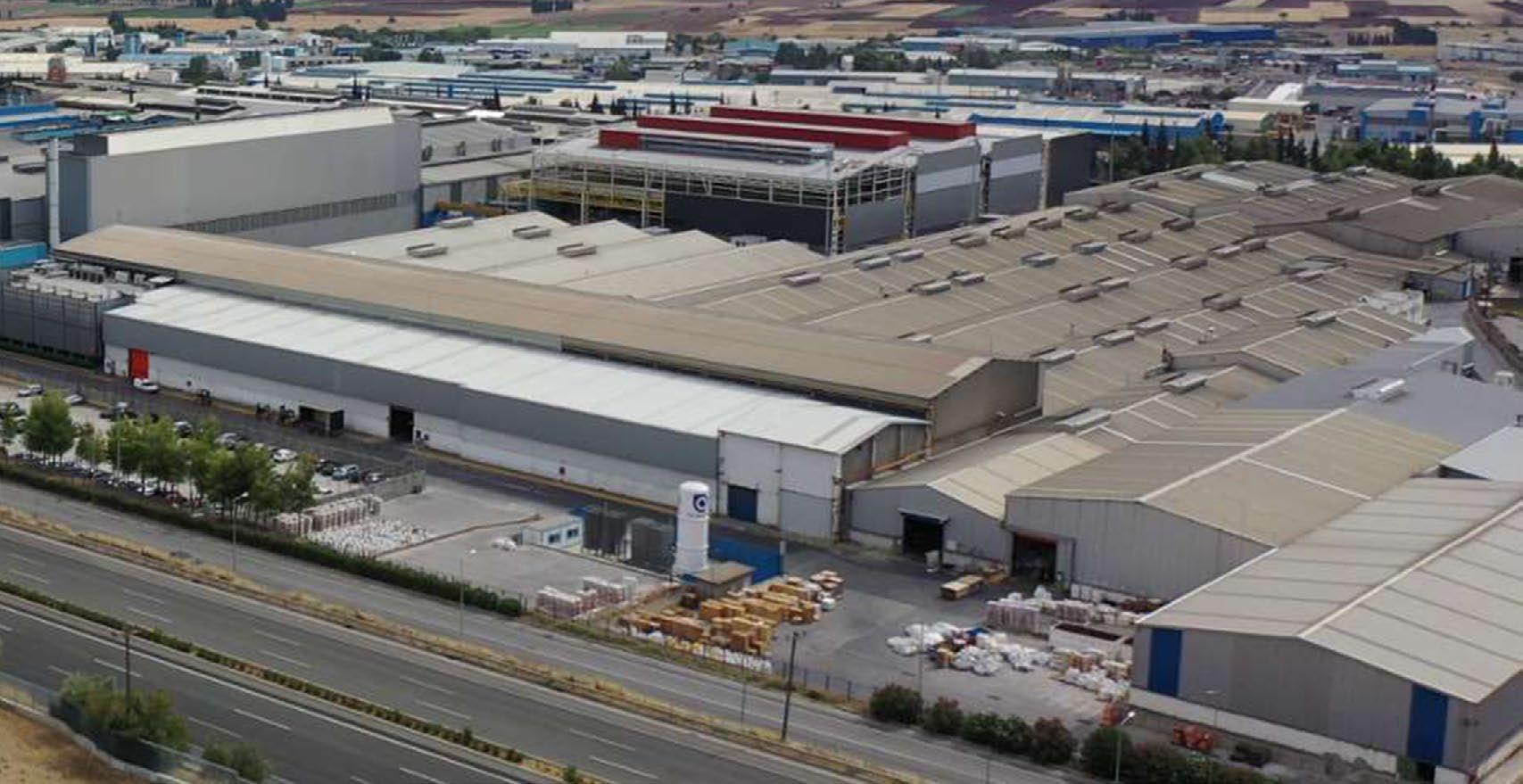
8 minute read
Special Issue: North American Iron Ore Report
THE LEAD
S p e c i a l I s s u e
Advertisement
North American Iron Ore Report
Cleveland-Cliffs Inc., ArcelorMittal SA and, United States Steel Corporation are the companies with the largest market share in the Iron Ore Mining industry in the United States.
Cleveland-Cliffs Inc.
It was 2020 when Cleveland-Cliffs Inc. underwent a transformation. The mining company delivering iron ore pellets to North American steel companies so far, now became the most major flat-rolled steel manufacturer in North America.
The acquisition of AK Steel in March 2020, which matched perfectly with the Company's optimistic future forecast for automobile production and manufacturing in the United States, was part of a strategy focused on American steel.
Now that Cleveland-Cliffs has risen to the top of the American steelmaking industry, providing clarity on its long-term business model is in everyone's best interests and an important method to help the company strengthen its long-term competitive edge. and began manufacturing high-quality hot-briquetted iron (HBI). The resultant HBI is a compacted type of direct reduction iron that is formed into briquettes (shape) for ease of shipping, handling, and feeding into blast furnaces and electric arc furnaces (EAFs). The initiative is a significant step forward in helping reduce GHG emissions, thus is a priority for them.
It is the world's most modern, efficient, and ecologically friendly Direct Reduction Plant, built on a brownfield re-development site near Toledo, Ohio. It also
accounts for making Cleveland-Cliffs the first ore-based, high grade metallics producer in the United States' Great Lakes region.
Steel is used in a variety of industries, including automotive, energy, construction, packaging, and infrastructure in exclusive, sustainable ways. The provision of advanced high-strength steels (AHSS) to automakers, especially third generation (Gen 3) steel grades, is one area of attention. For its clients, Gen 3 and other

AHSS products are less expensive and better for the environment over substitute elements like aluminum, magnesium, and carbon-fiber.
Furthermore, as the automobile sector transitions to electric vehicles (EV), Cleveland-Cliffs is a market leader in specialist electrical products.
It offers steels for hybrid and battery-electric vehicles that are more efficient and perform better. Several car firms are collaborating with Cleveland-Cliffs to employ their high-grade, corrosion-resistant materials. NOES (non-oriented electrical steel) is being used to make electric motors for the electric vehicle market.
ArcelorMittal
External factors in the global economy have always had a significant impact on ArcelorMittal's business context and operations in the United States. ArcelorMittal USA had a difficult year in 2019, as a result of the factors listed below.
With COVID-19's ramifications and the ensuing economic crisis, they’re again not very sure in 2021.
KEY CONTRIBUTORS ON THE ARCELORMITTAL OPERATING ENVIRONMENT IN THE U.S.
The State of the Industry: Apparent steel consumption in the U.S. declined by 2% in 2019, including a bigger decline of 4% seen by the flat roll market, that ArcelorMittal USA caters to. Steel demand suffered from the fall in the manufacturing produce outputs and destocking that happened over the delivery sector. These problems, when plussed with a below than normal pricing scenario, you have a recipe for disaster!
A significant mismatch arose among the overall economy and the market demand for steel products. There was an annual event in 2019 where there was a 2.3% increase in GDP! Despite the progressing economy, U.S. steel demand went flat and more weakened in 2019 given mature consuming markets, buyer uncertainty, and inventory destocking.
In 2019, imports had been on a declining trend. The implementation of Section 232 measures was all in line. This made possible shipments by U.S. steel mills to grow, following the rise of imports in 2014 that harmed 2015-2016 shipment levels. While the import market share was
the lowest it has been since 2013, foreign supply remaines resilient as global overcapacity continues. On the other hand, U.S. mill shipments have been negatively impacted by reduced export opportunities, which have declined by nearly 30% for flat roll products since 2017.
The construction market and infrastructure projects in the U.S. have a far-sighted effect on demand for steel from struc-

THE LEAD
tural steels to construction equipment, appliances and beyond. Throughout 2019, construction activity was experiencing a boom, following almost pre-recession marks, though Covid-19 is once again seeming to prolong this target timeline.
The steel industry’s relationship with government authorities, both in their own business and for the stakeholders, is a complex key business driver. It requires continuous work with customers to implement technologies to meet new standards and prepare the industry and customers for regulations, today and in the future.
Monitoring and actively lowering energy consumption is critical in an energy-intensive industry. The ability to rely on external energy sources is essential for a successful firm. ArcelorMittal USA continues to work with ENERGY STAR® and the Environmental Protection Agency.
Automotive manufacturing declined in 2017 and remained unchanged in 2018, after seven years of increase since the Great Recession.
2019 saw a further drop in North American car manufacturing and sales in the United States. Given the economic consequences of COVID-19, this trend continued through 2020. In the United States, the car industry will continue to be a major demand generator.
ArcelorMittal continues to underline the importance of the goods in the automotive business, particularly sophisticated highstrength steels and solutions, both now and in the future.
The majority of ArcelorMittal's shipments in the US go to the service center/ distribution (40%) and automotive (27%) markets, as well as energy/mining/chemicals/water (17%). U.S. Steel completed the acquisition of Big River Steel in Osceola, Arkansas, in early 2021, a $3.3 billion investment in their long-term sustainability. Big River Steel is a technologically advanced company. Through this acquisition, U.S. Steel as a whole is merging micro mill technology with components of the integrated venture with Kobe Steel, Ltd., in Leipsic, Ohio.
This machine, which has a capacity of 500,000 tons per year, coats the XG3TM AHSS grades in a cost-effective manner using a patented technique. Today, they’re distributing these cutting-edge, corrosion-resistant AHSS steels to our customers, including the Jeep® Gladiator platform, GM big SUVs, and the all-new Jeep® Grand Cherokee.’
The acquisition and installation of three electric arc furnaces (EAFs), one at Fairfield Works in Fairfield, Alabama, and the other two at Big River Steel in Osceola, Arkansas, has been a huge stride forward for U. S. Steel in recent years.
In 2020, U.S. Steel collaborated with a number of automakers and original equipment manufacturers (OEMs) to develop steel grades that would aid in the development of the most cutting-edge battery-electric vehicle architectures.
From their factory in Koice, Slovakia, they made progress in introducing highstrength, dual phase steels with increased formability in 2020. They introduced a novel formable cold-rolled steel with a tensile strength of over 1470 megapascals (Mpa) in the United States.
In April 2021, they introduced verdeXTM, a new sustainable steel product line that uses a fourth of the carbon intensity typically required for equivalent products made through integrated steelmaking.
U.S. Steel will set a goal to minimise nitrogen oxide (NOx) emissions from its operations. U.S. Steel is now analysing data in order to determine a baseline year and a reduction target for a specified time period.
They're aiming for a 20% reduction in GHG emissions intensity (Scope 1 plus Scope 2) by 2030, compared to a baseline year of 2018. They are committed to public reporting on progress toward these goals.

United States Steel Corporation


HALCOR PRODUCTS Copper tubes with or without lining or industrial insulation for applications in: • Drinking water and heating networks • Underfloor heating and cooling • Gas and medical distribution networks gases • Cooling and air conditioning systems • Solar energy applications • Various industrial applications Halcor is the copper tubes division of ElvalHalcor S.A. and together with four more companies form the copper segment of ElvalHalcor S.A. that specializes in the production, processing and marketing of copper and copper alloys products with dynamic commercial presence in the European and global markets. For more than 80 years, Halcor has been offering innovative and added-value solutions that meet contemporary client demands in fields, such as plumbing, HVAC&R, renewable energy, architecture, engineering and industrial production.
The copper segment of ElvalHalcor S.A. is composed of six subsidiaries and seven associates/joint ventures, based in Greece, Belgium, Bulgaria, Romania and Turkey, while it operates a total of five production plants in Greece, Bulgaria and Turkey.
The copper segment of ElvalHalcor S.A. develops and distributes a wide range of products, including copper and copper-alloy rolled and extruded products with Halcor being the sole producer of copper tubes in Greece. High quality in production is achieved through strict controls applied throughout the production process. With a consistent quality focus, the company implements an ISO 9001:2015 Certified Quality Management System and leverages high technologies and expert staff.
As a result of the Group’s strategic investments in research & development, Halcor is recognized as one of the leading copper producers globally, setting new standards in copper processing. The company maintains a consistent focus on quality and environmental protection and a strong commitment to the principles of sustainable development. In this context, all production facilities in the Group’s plants leverage advanced technologies to bring in the market innovative products that are energy efficient and environmentally friendly.










